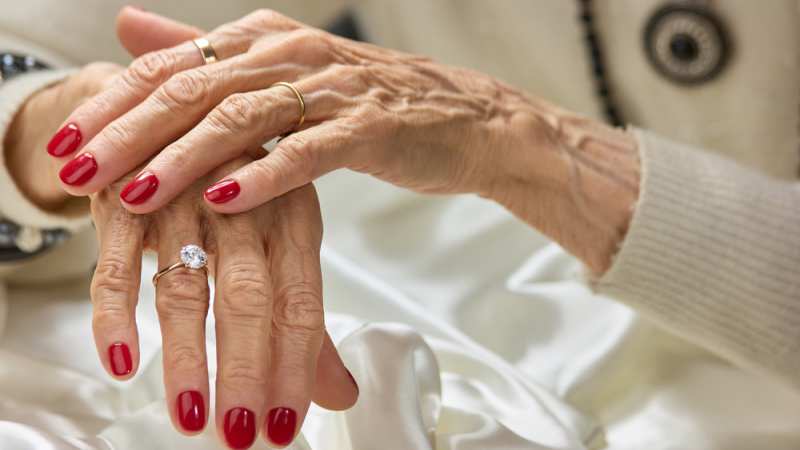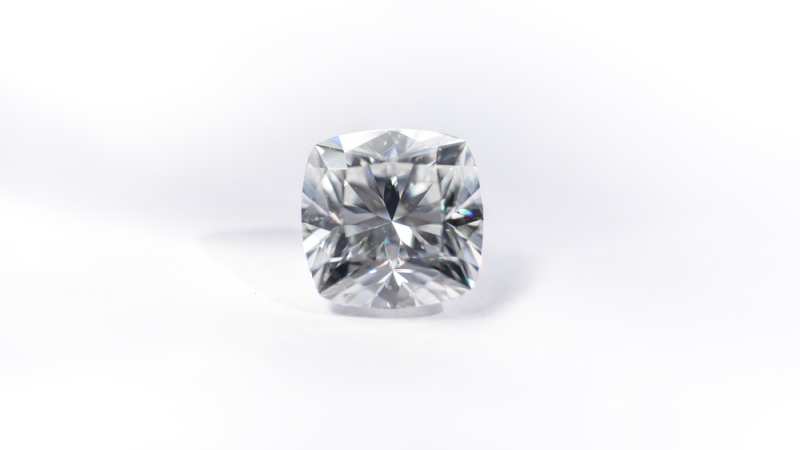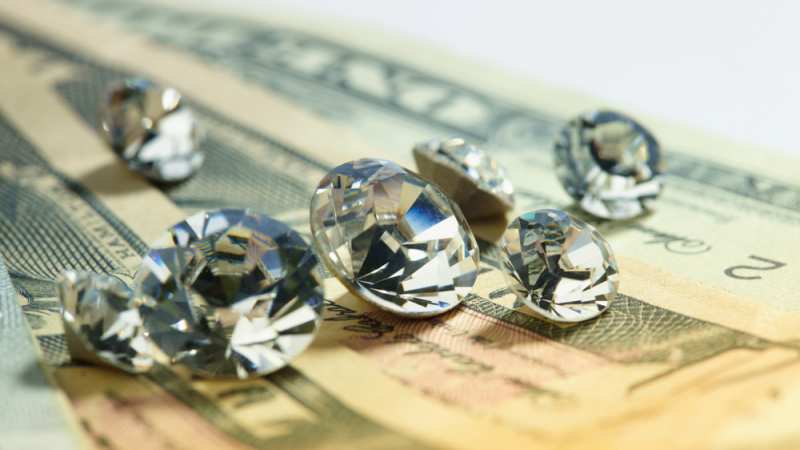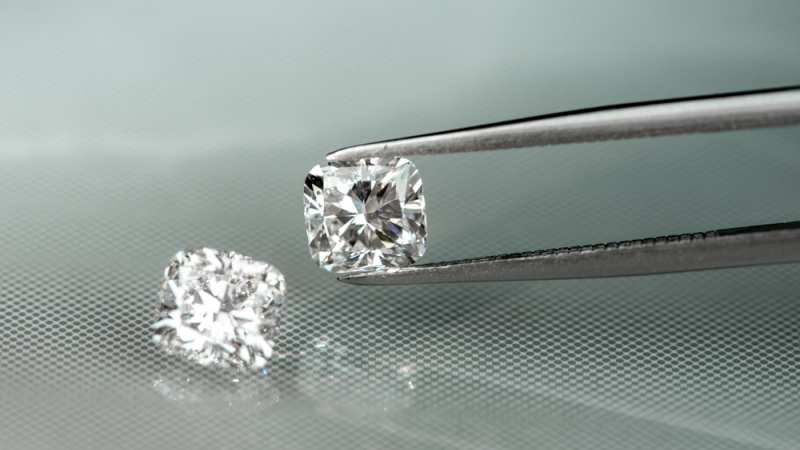When it comes to diamond cuts, there are various options available, each with its own distinctiveness. One such cut is the cushion cut diamond, but before we delve into its details, let’s answer the question: what exactly is a cushion cut diamond?
Like any other diamond cut, the popularity of cushion cut diamonds has varied over time, so it’s important to consider the historical context. However, there’s no need to worry. We will discuss this further, along with other key characteristics of cushion cut diamonds.
In the world of diamonds, there is a wide array of choices, and the most important thing is to find the one that resonates with your personal preferences and stick with it. Of course, you can also experiment with different styles and cuts based on your mood and budget.
Regardless of your approach, it is essential to familiarize yourself with diamonds in general, including their various styles and cuts, to discover what suits you best.
With that in mind, now is the perfect time to explore cushion-cut diamonds and determine if they are something you are willing to consider for your jewelry.
DESIGN YOUR OWN ENGAGEMENT RING: START WITH A SETTING OR START WITH A DIAMOND. IT’S REALLY UP TO YOU!

The Origin – Where Did The Cushion Cut Come From?
The modern-day cushion cut, with its specific facet design, can be traced back to its predecessor, the Old Mine Cut, which originated in the 1700s. During this time, diamond mining shifted from India to Brazil as the primary source of diamonds.
Brazilian stone cutters adopted the Old Mine cut because it allowed for maximum carat retention. This means that less rough gemstone material needed to be removed during the cutting process, making it an efficient choice. One notable example of the early Old Mine cut is the Regent diamond, a magnificent 410-carat diamond of Indian origin dating back to 1701.
While the history discussed so far is not directly related to cushion cut diamonds, it provides insight into the diamond cuts that paved the way for this particular shape. It’s not uncommon for a cut to evolve and acquire a new name over time, especially if it has been around for several centuries.
This demonstrates that cushion-cut diamonds were popular long before they received their current name. While the old miner’s cut and cushion cut are now considered distinct cuts, it’s important to remember that the cushion cut originated from the old cut.
In the early 1900s, the round brilliant cut rose to prominence and became one of the most favored diamond cuts worldwide. However, this shift in popularity did not diminish the appeal of the cushion cut we are discussing today.
Throughout the 20th century, the cushion cut experienced periods of popularity, particularly in the 1920s and again in the 1950s. Such waves of popularity are common for many diamond cuts.
Therefore, it should come as no surprise that trends in diamond cuts, like fashion trends, come and go. What may be considered stylish and trendy today may regain popularity in the future.

The Shape – Specific & Breath-Taking
Cushion-cut diamonds, like every other diamond, have a distinct shape that sets them apart and makes them easily recognizable. What makes cushion-cut diamonds stand out is their unique design and appearance, which exudes elegance and subtle brilliance.
In terms of facets, modern cushion cut diamonds typically have 64 facets, while the older version known as the Old Mine cut had 58 facets. It’s worth noting that cushion cut diamonds are now commonly referred to as “cushion brilliant cut diamonds.” This designation reflects their incorporation of the original cushion cut’s patterns along with additional features inspired by the popular round brilliant diamond, which has been a favorite shape for decades.
Cushion brilliant cut diamonds are typically square or squarish-rectangular in shape, with gently curved sides and either rounded or slightly pointed corners. Between the girdle and the culet, these diamonds usually have four or eight main kite-shaped facets. However, there are also modified versions of cushion-cut diamonds that incorporate additional crown facets, adding to their brilliance. These modified cushion-cut brilliant diamonds offer a unique variation of the traditional cushion cut.
Cushion-cut diamonds are often used in rings and delicate necklaces, and they are well-known for their understated elegance in the world of jewelry. While some may prefer more flashy and extravagant diamond cuts, the cushion cut appeals to those seeking a quality diamond with a more subtle display of wealth.
Regardless of the setting you choose, a cushion-cut diamond will undoubtedly capture attention and become the centerpiece of any jewelry piece it adorns.

Cushion-Cut Diamonds Vs. Other Diamonds
When it comes to diamonds, there is an abundance of unique and beautiful options available. As a diamond shopper, it’s natural to want to understand how cushion-cut diamonds compare to other diamond cuts. Let’s delve into that topic a bit further.
Sometimes, even small variations between two similar gems can make a significant difference, depending on the wearer and the circumstances. That’s why it’s crucial to explore the comparisons between cushion-cut diamonds and other similarly cut diamonds.
One of the most common comparisons is between cushion-cut diamonds and round brilliant cut diamonds. It’s important to note that cushion cuts combine the brilliance of a round brilliant diamond with the symmetry of a radiant cut. However, due to their 58 facets, cushion-cut diamonds have a slightly lower level of sparkle compared to round gems.
Another noteworthy comparison is between cushion-cut diamonds and princess cut diamonds. These two cuts fall into the category of square shapes but possess distinct characteristics. Princess cut gemstones are known for their sharp edges, giving them a modern and geometric appearance. In contrast, cushion-cut diamonds feature rounded edges, evoking a softer and more romantic feel.
These comparisons highlight the unique and characteristic nature of cushion-cut diamonds, placing them in a category of their own. They exhibit individuality in every aspect, from their shape to their overall form.
Price is another factor to consider, but we’ll touch on that shortly. Due to their unique shape, cushion-cut diamonds can be somewhat complex choices for first-time buyers. There are various aesthetic choices to make, such as opting for a square or rectangular shape, selecting a design with or without the hearts-and-arrows pattern, or deciding on the presence of a “crushed ice” effect, among other considerations.
In summary, cushion-cut diamonds possess their own distinct charm and cannot be easily categorized alongside other diamond cuts. Their unique shape and aesthetic options make them intriguing choices for those seeking a truly individual and captivating diamond.

The Price – How Much Should You Spend?
When discussing diamonds, the topic of price is inevitable. While there are budget options available in the jewelry market, cushion-cut diamonds are not among them.
On average, you can expect to pay between $1,400 and $1,600 for a 0.75-carat cushion cut diamond. This price range reflects the fact that crafting these diamonds is a labor-intensive process, resulting in higher cutting costs and, consequently, a higher price tag at the jewelry store.
Compared to round brilliant cut diamonds, which can cost around $18,000 per carat, cushion-cut diamonds are relatively more affordable. However, when compared to budget options priced around $850 per carat, cushion-cut diamonds are considered more expensive.
The decision on whether cushion-cut diamonds are worth the investment depends on your budget and personal preferences. Some individuals may prefer purchasing multiple lower-priced diamonds, while others may prioritize fewer but higher-quality diamonds. It ultimately comes down to individual choice.
Due to the specific shape of cushion-cut diamonds, we highly recommend seeing them in person before making a purchase. Visit a local jewelry store and try on a ring or earrings featuring cushion-cut diamonds to see how they fit and look when worn. Diamonds can appear different in a showcase compared to how they appear when worn, so it’s essential to consider this when shopping for diamonds.
Now that you have an idea of the price range for cushion-cut diamonds, let’s explore whether they are worth the investment or if there are alternative options available.
Suppose you have a budget of around $1,000, which falls below the price range of cushion-cut diamonds. In that case, you could consider opting for diamonds with the same cut but in smaller sizes. Many people choose this approach when shopping for diamonds on a limited budget.
The shape and cut of the diamond are often important factors for individuals, and they may choose to prioritize these aspects over a larger diamond with a different cut.
We also recommend considering this approach. The shape and quality of the cut are more significant than the sheer size of the diamond. Therefore, managing your budget to obtain the diamond shape you desire while prioritizing quality over quantity is a wise choice.

Conclusion
Now that you have gained knowledge about the appearance, cost, origins, and characteristics of cushion-cut diamonds, let’s summarize what you have learned today.
Firstly, it is important to remember the historical connection between the Old Mine cut and the modern cushion cut, as the former influenced the latter’s development.
Secondly, cushion-cut diamonds have experienced two waves of popularity in the past, and it wouldn’t be surprising if their appeal resurfaces in the future, as trends tend to evolve cyclically.
The distinctive shape of cushion-cut diamonds combines elements of the round brilliant cut and the radiant cut, resulting in a unique appearance with a total of 64 facets.
By delving deeper into these diamonds, you have likely understood why they fall into a relatively higher price range compared to other diamonds. Their originality and authenticity contribute to their value.
When you come across cushion-cut diamonds, it is advisable to try them on and observe how they enhance your appearance. If they align with your preferences and fall within your budget, they are certainly worth considering for a memorable and distinctive choice.


